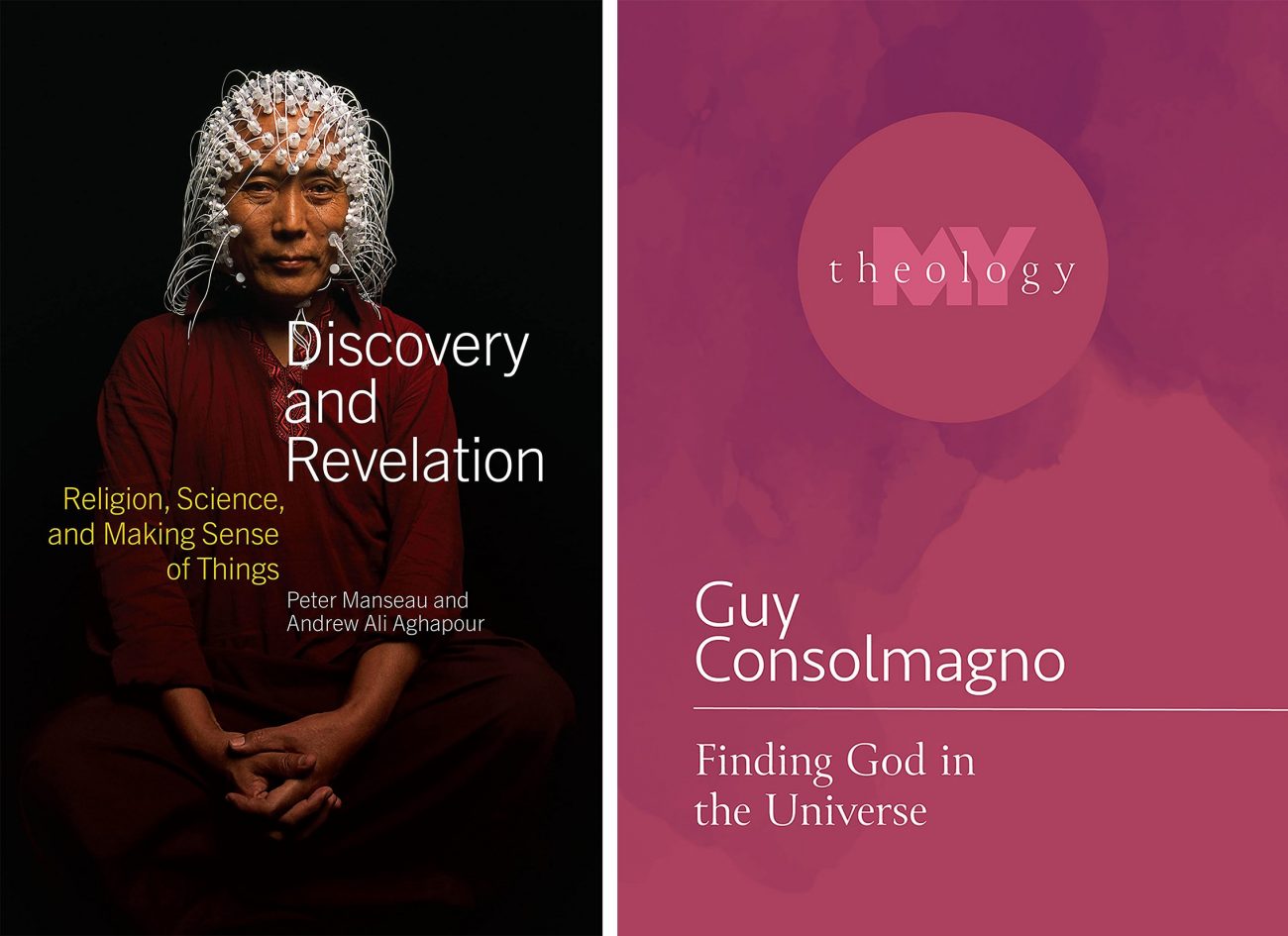“Discovery and Revelation: Religion, Science and Making Sense of Things” by Peter Manseau and Andrew Ali Aghapour. Smithsonian Books (Washington, 2022). 160 pp., $29.95.
“Finding God in the Universe” by Guy Consolmagno. Fortress Books (Minneapolis, 2022). 87 pp., $12.75.
Conventional wisdom suggests that science and religion are at odds — facts versus faith. These two books, however, make a persuasive case for the “relational unity” between powerful fields of human thought.
In this effort, the authors draw on the spirit of St. John Paul II as expressed in an address at the Vatican Observatory in 1987. In those remarks, the pope called for theologians and scientists to find the harmony between science and religion. “We move toward unity,” he stressed, “as we move toward meaning in our lives.”
[hotblock]
The pope’s challenge was daunting, but these slim volumes offer important thoughts for our consideration. Neither book provides a blueprint for how science and faith fit together, but both books help us to ask better questions.
“Discovery and Revelation” is an extension of a Smithsonian exhibit of the same name. It’s a book of both text and illustrations “that examine the mutual influence of two ways of knowing that continue to shape the American experience.”
Both the book and the exhibit address fundamental questions. “Science and religion are both well equipped to offer possible answers to humanity’s ultimate existential questions,” note the authors. “What does it mean to be human? What is unique about our species and our consciousness? What are our bodies made up of? Where did we come from?”
The authors highlight how faith and science have worked together in significant moments in history. The first theme is “revolutions” and concentrates Enlightenment ideas in the 18th century. The second theme is “evolution” and focuses on the clash between scientific and religious thought in the 19th century. The third theme is “complexity” and evaluates the interaction between religion and science in the 20th century.
In the process of developing these themes, the authors feature not only well-known scientists and events, but also those that are not common knowledge. Of significance, the narrative notes the importance of women and people of color in science and the considerable achievements of non-Christians.
This is a rich and substantive book with a lofty goal. “By examining the subject both chronologically and thematically,” write the authors, “‘Discovery and Revelation’ seeks to highlight any patterns that may appear, which in turn could provide new ways of approaching moments of conflict and congruence that we cannot yet imagine.”
Astronomer and Jesuit Brother Guy Consolmagno might well add a prayerful amen to “Discovery and Revelation.” Brother Consolmagno is a physicist and the director of the Vatican Observatory. His new book, “Finding God in the Universe,” is something of a homily on science and religion.
This is a deeply personal book. “I encounter God with the same tools that I use to encounter the universe: my senses, my reason, my imagination,” he writes in his conclusion. “That is to say, I use everything that makes me human: my liberty, my memory, my understanding and my entire will.”
That’s powerful testimony coming from a world-class scientist. As a man of both faith and reason, he leans on the skills and abilities that God has given him to define science as something of an act of prayer.
Both books underscore that science and faith are, indeed, partners in the search for truth. The authors reiterate the words of St. John Paul II from 1987 at the Vatican Observatory. Scientists and theologians must move in unity to find the meaning of life.
***
Also of interest: “Extraterrestrial Intelligence and the Catholic Faith: Are We Alone in the Universe With God and the Angels?” by Paul Thigpen. Tan Books (Gastonia, North Carolina, 2022). 456 pp., $29.95.
***
Walch is a historian of American Catholicism and the author of “Parish School.”
PREVIOUS: ‘Thor’ sequel puts hammer down on hero’s neediness
NEXT: ‘Paws of Fury’ dogged by lowbrow humor




Share this story